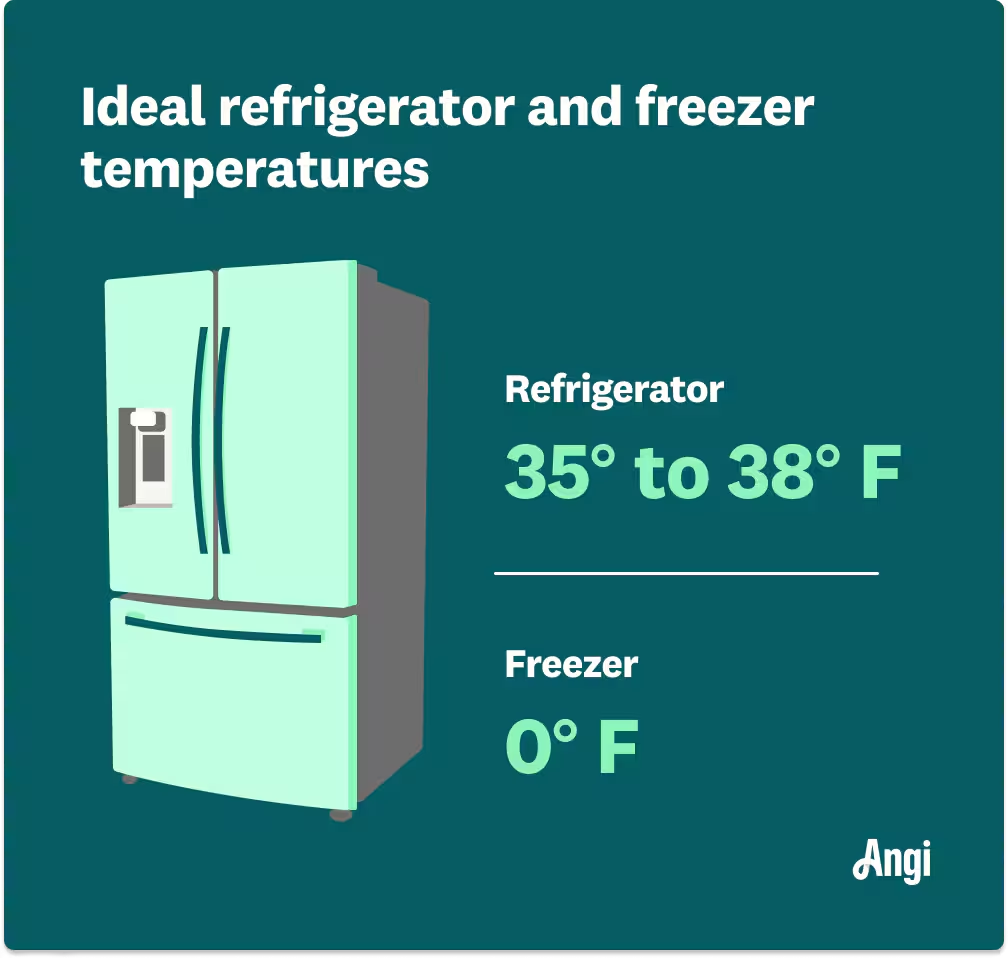
Discover the average washing machine repair cost, key price factors, and expert tips to help you budget and save on repairs for your home.
Here’s what you need to know to properly preserve your food


Your freezer must be at 0ºF to preserve food and prevent bacteria growth.
Keep your refrigerator at or below 40ºF.
The cost to repair a freezer is between $90 and $500.
If you’re an ice cream fan, then you understand the importance of having a freezer working at optimum levels. But it’s about much more than avoiding the disappointment of half-melted or freezer-burnt treats. The ideal freezer temperature is necessary to ensure food is preserved properly. Let’s take a look at how cold your freezer should be, along with the right temperature for your refrigerator.

The ideal temperature for your freezer is 0ºF (-18ºC). This is what is recommended by the US Food & Drug Administration (FDA) for keeping food frozen and well-preserved until you are ready to consume it.
You’ll notice that 0ºF is well below 32ºF, which is the freezing point of water. You’ll definitely need more than just a single degree as an insurance policy for your frozen food. But it’s more than just keeping those ice cubes solid; it’s about keeping food bacteria-free, which your freezer can do when it’s set to 0ºF.
The FDA recommends setting your refrigerator to 40ºF (4ºF) or below. It’s well above the frozen mark, but it’s still quite cold to keep your perishable food well-preserved.
But don’t just set your refrigerator temperature to 40ºF and call it a day. You’ll actually want it to register between 35° and 38°F (or 1.7 to 3.3°C) instead, just in case your refrigerator’s thermometer is a little off. It’s always better to have colder but not frozen food in your refrigerator to keep bacteria at bay.
If you have a newer appliance, it might be as easy as setting a digital thermometer on the door of the freezer. (If it’s a smart appliance, you might have to download an app to do the same.) Older models might have a knob that allows you to adjust the temperature.
Ultimately, your freezer’s brand and model design will determine the method of setting the proper temperature, so contact the manufacturer or appliance retailer directly if you have any issues.
If your freezer is working as it should, then you can trust the number you see on the thermometer gauge. But if you find that your food isn’t keeping well or is covered in ice crystals, you might want the backup of an appliance thermometer.
You can purchase an appliance thermometer at an appliance store or your local home improvement store. Place one near the center of the freezer—aim for a spot right between a pair of already-frozen items—and leave it there for around eight hours (or overnight). To get the most accurate temperature reading, refrain from opening the freezer door.
If you find that the appliance thermometer is registering a higher or lower temperature than what the freezer is supposedly set to, call a freezer repair pro near you to inspect and troubleshoot the freezer. It can cost anywhere between $90 and $500 to repair a freezer, depending on the extent of the issue. Depending on the cost of your freezer, this might be a bargain or the encouragement you need to purchase a new appliance.
Keep in mind that if your freezer can’t maintain the proper temperature, your food is at risk of freezer burn at best and bacteria growth at worst. While freezer burn might negatively affect the taste of your food, it won’t harm you—but bacteria growth can.
From average costs to expert advice, get all the answers you need to get your job done.

Discover the average washing machine repair cost, key price factors, and expert tips to help you budget and save on repairs for your home.

Depending on repair needs and machine age and type, the cost to replace a heating element in a dryer can vary. Learn the average repair costs.

Discover the cost to install washer and dryer hookups. Learn about price factors, labor, materials, and tips to save on your laundry room project.

Learning how to remove an oven door makes it easier to clean or repair it. Follow these steps to remove your oven door without damaging it.

Keep standing water and water damage from a clogged laundry drain at bay with this guide. Follow these steps for how to unclog a washer drain.

You have options for disposing of old appliances, like your refrigerator, freezer, washer or dryer. Use this guide to learn what to do with old appliances.